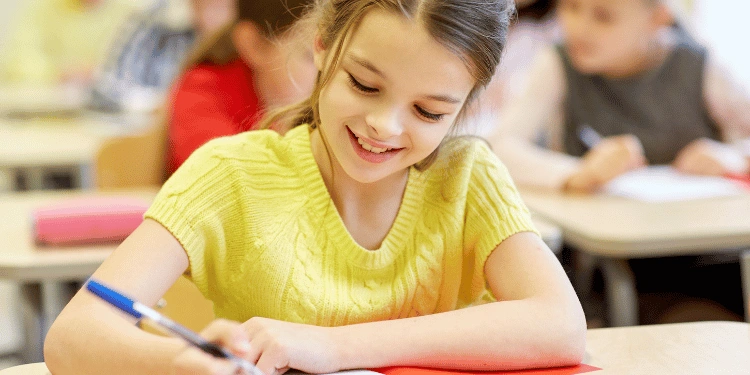Primary School Phone Ban Success Story: What Parents and Educators Need to Know
Introduction: The St Albans Smartphone Experiment
Overview of the Initiative
Nearly a year ago, 33 primary schools in St Albans embarked on a bold experiment.
The schools collectively decided to implement a smartphone ban for all children under the age of 14.
The initiative was born out of a growing concern that smartphones were affecting pupil behaviour negatively, not just within school hours but significantly outside of them too.
The experiment aimed to address these external issues, with a hopeful knock-on effect on classroom conduct.
Key Statistics
The overwhelming statistic that marked the success of this initiative was the drastic drop in smartphone ownership among Year 6 pupils.
Before the restriction was implemented, an astonishing 68% of children aged 10 and 11 already had their own smartphones.
After the ban, that figure plummeted to an impressive 7%.
This substantial decline not only highlighted the programme’s effectiveness but also its acceptance among parents and the community.
Addressing Broader Issues
The initiative did not just focus on reducing smartphone use; its broader aim was to solve problems originating from excessive screen time and social media influence.
Headteachers, including Matthew Tavender from Cunningham Hill primary schools, noticed that the main problems often surfaced outside school hours.
Issues such as bullying, inappropriate content sharing, and exposure to concerning figures were rampant, particularly on platforms like WhatsApp.
Mr Tavender remarked that the Monday mornings at school were often spent dealing with the fallout from these online interactions.
The collaborative approach of the 33 St Albans primary schools served as a significant step in highlighting the broader conversation around childhood and digital wellbeing.
As we move on to understand why schools took this necessary action, it becomes evident that addressing smartphone influence requires comprehensive strategies both inside and outside school environments.
Why Schools Took Action: The Growing Problem
Pervasive Influence of Smartphones and Social Media
Before the smartphone ban, primary schools in St Albans faced extensive challenges due to the pervasive influence of these devices and social media.
According to Matthew Tavender, Head of Cunningham Hill primary schools, the real issue was not the use of smartphones during school hours but their effect on students’ lives outside school.
This influence often spilled over and disrupted the classroom environment.
Tavender noted that while pupils did not use smartphones during school, the repercussions of their online activities during weekends were palpable on Monday mornings.
The schools decided that a joint effort was essential to tackle the problem.
Bullying and Friendship Issues Stemming from WhatsApp Groups
One of the most pressing concerns was bullying and friendship issues stemming from the use of WhatsApp groups among the students.
Tavender pointed out that WhatsApp was the main cause of discord among children at his school, with groups expanding to nearly 90 participants, including people not from their school.
These interactions bred negativity, including inappropriate language and sharing images, which often incited discussions about violence and race.
Social dynamics changed drastically—grievances from the school playground now followed children home, prolonging conflicts through instant messaging apps.
Inappropriate Content Sharing and Exposure
Further compounding these issues was the exposure to inappropriate content and concerning online figures.
Tavender mentioned that some Year 6 pupils revered notorious online personalities, which led to worrying dialogues among the students.
These influences contributed to heightened anxiety and behavioural problems, prompting teachers and parents to step in.
Although the first year of the smartphone-free initiative reduced such incidents significantly, a small group of remaining smartphone users continued to pose problems.
Transitioning into more comprehensive strategies for improving digital wellbeing is essential for sustainable impact.
Observable Benefits: One Year Later
Improved Attention Spans and Focus in the Classroom
The implementation of the smartphone ban across 33 primary schools in St Albans led to significant improvements in students’ attention spans and focus during lessons.
Teachers observed that without the constant distraction of smartphones, children were more present and engaged in their academic tasks.
Headteacher Matthew Tavender highlighted this, noting that older children who would have typically had smartphones showed a noticeable enhancement in their ability to concentrate and participate in classroom activities.

Enhanced Social Relationships and Communication Among Pupils
Another remarkable benefit of the ban was the improvement in social relationships and communication among students.
Before the ban, issues stemming from WhatsApp group interactions were prevalent, often causing conflicts and misunderstandings that carried into the school environment.
With the ban in place, pupils were interacting face-to-face more frequently, which fostered stronger friendships and better communication skills.
Tavender mentioned that children were now talking and playing more, which wasn’t the case previously.
Increased Physical Activity and Play
The initiative also led to a significant increase in physical activity and outdoor play among pupils, reversing previous sedentary behaviour trends.
Prior to the ban, many children spent their free time engrossed in their smartphones, which limited their physical activity.
A year later, it was evident that children were now more inclined to engage in outdoor activities and play, contributing to their overall physical well-being.
The change was clear to see in the schoolyards, where pupils were more active and involved in various physical games during breaks.
These observable benefits have set a firm foundation for continued efforts in digital wellbeing. The focus now shifts to extending these positive outcomes beyond primary education.
The Parent Perspective: Building a Community Approach
Smartphone-Free Ambassadors
One of the innovative strategies introduced by St Albans primary schools to maintain the smartphone ban was the appointment of smartphone-free ambassadors for each year group.
These ambassadors played a crucial role in keeping families committed to the initiative by acting as liaisons and champions for the cause.
Parents found it easier to stick to the smartphone-free pledge when they saw widespread support across the community, reinforcing the notion that collective action can drive significant change.
The Power of Collective Action
The success of the smartphone ban hinged on collective effort.
When most families within the schools participated in the initiative, it created a strong community norm and support system.
This collective action helped mitigate the influence of peer pressure, as children found themselves in an environment where not having a smartphone was the norm rather than the exception.
Recognising this, parents reported that maintaining the ban became simpler when they saw the majority adhering to the commitment, thus reducing the urge for children to demand smartphones simply to fit in.
Improved Regulation and Mood
A significant outcome observed by parents was the improvement in their children’s mood and self-regulation with reduced screen time.
Without the constant lure of smartphones, children started engaging more in physical activities, playing outdoors, and communicating face-to-face, contributing to their emotional and physical wellbeing.
Parents noted a decrease in the low moods and dysregulation often associated with excessive screen time, indicating a positive shift in their children’s overall behaviour and engagement levels.
The ongoing benefits experienced by families underscore the potential of community-driven initiatives to effect lasting change.
By addressing the issues around smartphone use at a grassroots level, the schools in St Albans have fostered an environment that supports healthier habits and better mental wellbeing for their pupils.
Persistent Challenges and Limitations
Even with the remarkable overall success of the smartphone ban in St Albans’ primary schools, there remain significant challenges that need addressing.
The persistence of a minority of students still owning smartphones and using them improperly continues to create problems.
This showcases the complexity of managing and upholding such a ban uniformly across a community.
The Minority with Smartphones
Despite the ban’s effectiveness in reducing overall smartphone ownership to just 7% among Year 6 pupils, the small group of students who still have smartphones poses ongoing issues.
These children remain susceptible to the same negative influences the ban aims to counteract: inappropriate messaging, exposure to concerning online material, and the resultant behavioural problems at school.
According to headteacher Matthew Tavender, it’s clear that even a few remaining smartphone users can disrupt the broader benefits gained by the majority.
Difficulties in Device Removal
Unlike simply never introducing a device, taking smartphones away from children who already own them proves to be a far tougher challenge.
Parents and educators alike have found the resistance and potential distress from children to be substantial.
Parental support, robust policies, and community backing are crucial to overcoming the resistance associated with taking devices away.
Graham Dill, a parent and tutor, underscores how prevention is more effective than retraction, stating, “Taking something away is a lot harder than not letting people have it in the first place”.
Peer Pressure and Technology Adoption
Peer pressure continues to be a significant factor influencing children’s desire for smartphones.
The desire to fit in and emulate peers who possess these devices can be intense, particularly during primary school years.
As Dill pointed out regarding other digital temptations, such as Fortnite, children are heavily influenced by what their friends have and do.
This social dynamic can make adherence to the ban more challenging, as the urge to conform often overrides other considerations.
These persistent challenges highlight the need for continual community effort and support beyond the initial implementation phase.
While the smartphone ban has fostered many positive changes, addressing these ongoing issues is critical to sustaining its success.
Reflecting on these challenges reinforces the necessity for a comprehensive, community-centric approach to digital wellbeing, an approach that seamlessly connects to the policies and practices in secondary schools.
Secondary School Connection: Extending the Impact
Parent Ambassadors: Lobbying for Change
As primary schools in St Albans witness the benefits of their smartphone ban, parents are now advocating for tighter controls at the secondary school level.
Parent ambassadors have been instrumental in this movement, actively engaging with local secondary schools to adopt similar restrictions.
They argue that the introduction of smartphones at a later stage will extend the positive outcomes observed in primary schools, such as improved attention, better peer interactions, and enhanced physical activity.
Diverse Secondary School Policies
The effectiveness of these efforts varies, as secondary schools in the region have different policies regarding smartphones.
For instance, Samuel Ryder Academy allows students to bring phones but restricts their use during lessons and personal time on site.
In contrast, other schools, like the Community School in London, have adopted stricter measures.
Their policy bans smartphones entirely for students in years 7, 8, and 9, only allowing them for key stage 4 pupils under strict conditions.
By key stage 5, usage is permitted but highly regulated, with phones allowed only when teachers approve their use in lessons.
Benefits of Stricter Measures
These stricter measures have yielded significant benefits.
The Community School in London, for example, has experienced a noticeable decrease in safeguarding issues and bullying incidents.
Deputy Head Paul Drummond highlights a substantial improvement in the atmosphere during break times, noting that the absence of phones has created a happier environment for students.
Challenges and Considerations
Despite these successes, some challenges remain.
Concerns about racial stereotyping for students using basic phones, perceived as ‘burner phones,’ have arisen.
Additionally, there’s an ongoing debate about the balance between strict phone bans and the necessity of educating students on responsible smartphone use.
Research indicates that bans alone do not improve grades or overall wellbeing unless coupled with comprehensive digital citizenship education.
Thus, the collective effort of primary and secondary schools, alongside community support, is crucial for fostering healthier digital habits among students.
Beyond the Ban: Comprehensive Digital Wellbeing
Rethinking the Approach: More Than Just Smartphone Bans
While the St Albans primary schools’ initiative to ban smartphones has demonstrated significant improvements in students’ behaviour and well-being, it has also brought to light a critical insight: bans alone are not sufficient to foster long-term academic and emotional benefits.
This realisation corresponds with the findings of recent studies.
For example, the University of Birmingham study highlighted that merely banning smartphones does not inherently improve grades or overall well-being.
To truly support children, such restrictions need to be coupled with broader digital citizenship education and strategies aimed at reducing screen dependency.
Coupling Restrictions with Education
To go beyond the ban, schools and parents should focus on educating children about responsible digital citizenship.
This involves teaching children how to use technology thoughtfully and safely.
Educational modules could include lessons on:
- The importance of privacy and the risks associated with sharing personal information online.
- How to spot and appropriately respond to cyberbullying.
- The significance of critical thinking when evaluating online content, helping them discern between reliable and misleading information.
By integrating these educational components, children can develop a more nuanced understanding of technology and its impacts, equipping them with the tools to navigate the digital world responsibly.
Encouraging Physical Activity and Outdoor Play
Another vital aspect of comprehensive digital well-being is encouraging children to engage in physical activities and outdoor play.
The St Albans experiment saw a reversal in sedentary behaviour trends, demonstrating the benefits of reducing screen time.
Schools can support this shift by:
- Incorporating more outdoor activities within the school curriculum.
- Organising sports events and encouraging participation in physical clubs.
- Promoting unstructured playtime that stimulates creativity and interpersonal skills.
Such initiatives not only foster physical health but also enhance social skills and cognitive development, offering a holistic approach to child well-being.
Reducing Overall Screen Dependency
Parents and educators can work together to devise strategies that support a balanced use of technology. This could include:
- Setting consistent screen time limits to ensure children engage in a variety of activities.
- Creating ‘tech-free’ zones or times at home, such as during family meals or before bedtime.
- Promoting screen-free activities such as reading, creative arts, or exploring the outdoors can help foster healthier habits and interests.
This balanced approach helps children appreciate the value of face-to-face interactions and offline activities, establishing a healthier relationship with technology.
Transitioning to Sustainable Digital Habits
As the St Albans community has shown, establishing phone-free environments can have profound positive impacts.
However, to ensure these benefits are sustainable, the focus must extend beyond restriction towards comprehensive digital well-being.
By combining enforced limits with education on digital citizenship and encouraging diverse activities, we can foster an environment where technology enhances rather than detracts from childhood development.
The National Debate: Policy vs Local Action
The St Albans smartphone ban has sparked a broader conversation about whether digital wellbeing should be managed locally or through national policy.
While the St Albans schools tackled screen time issues through community-driven efforts, there is an ongoing debate about the best way to handle this significant issue across the country.
Localised Efforts and the ‘Postcode Lottery’
Introducing smartphone bans on a school-by-school basis has created what some describe as a ‘postcode lottery.’
This inconsistency means that children in neighbouring areas may have vastly different experiences with technology, leading to unequal protection and support.
Parents and educators have expressed frustration about these disparities, calling for more standardized measures.
The Case for National Policy
Many advocates push for a government-led approach to provide a uniform standard across all schools.
Such a policy would prevent the uneven implementation of rules and ensure all children benefit from reduced screen time.
International examples support this argument.
Countries like France and South Korea have implemented national policies restricting smartphone use among students, showing significant improvements in behaviour and focus in classrooms.
Insights from Other Countries
France banned smartphones for students up to the age of 15 in 2018, primarily to improve focus and reduce bullying.
Studies indicated a positive impact on students’ attention and social interactions.
South Korea has also introduced measures to limit children’s screen time, combining restrictions with extensive education on digital citizenship.
Challenges in Policy Adoption
There are hurdles in adopting a universal policy. Diverse opinions on children’s screen time and parental controls make consensus difficult.
Additionally, implementing a national policy requires comprehensive planning and resources, which can complicate and delay action.
Despite these challenges, there is a strong case for a balanced approach, combining local initiatives with broader guidelines.
This could help ensure that all children benefit from reduced screen time and improved digital wellbeing, regardless of their postcode.
By addressing both local and national perspectives, we can create a cohesive strategy to manage children’s technology use and safeguard their development.
This cooperative approach may offer the best of both worlds, combining the strengths of grassroots movements with the stability of national policies.
These discussions pave the way for schools and communities to work together towards a future where screen time is balanced thoughtfully, ensuring it enhances rather than disrupts childhood.
Practical Advice for Parents and Educators
Tips for Delaying Smartphone Introduction
Delaying smartphone introduction can be a practical strategy for parents aiming to foster healthier habits among children.
Here are some practical tips for parents:
| Strategy | Implementation | Developmental Benefit | Practical Execution |
|---|---|---|---|
| Expectation Setting | Early conversations about smartphone use | • Cognitive protection • Healthy habit formation • Improved focus |
• Family media agreement • Regular check-ins • Visual reminders |
| Digital Literacy | Foundational tech education | • Safe internet use • Critical thinking skills • Technical competence |
• Typing tutorials • Curated app selection • Privacy workshops |
| Gradual Exposure | Supervised device usage | • Balanced tech relationship • Self-regulation skills • Contextual learning |
• Timer-controlled sessions • Shared device policy • Activity debriefs |
| Parental Modeling | Conscious adult device use | • Authentic behavior modeling • Quality interaction time • Reduced tech dependence |
• Phone-free meals • Designated tech zones • Transparent usage limits |
Managing Technology Transitions
Transitioning children to increased technology use, when appropriate, should be managed carefully:
- Create a Family Media Plan: Outline clear rules and limits for technology use at home. Specify when and where smartphones can be used, for example, no devices during meals or before bed.
- Introduce Gradual Responsibility: Start with a time-limited or app-restricted basic phone before moving to a full-featured smartphone. This helps children adapt responsibly.
- Monitor Usage: Use parental control apps to keep track of what children are doing on their devices, ensuring they follow the family guidelines.
- Encourage Offline Activities: Balance tech time with offline activities like sports, reading, and hobbies to prevent overdependence on screens.
Strategies for Building Community Consensus
Building a community consensus around digital boundaries ensures broader support and consistency:
- Start Conversations Early: Engage other parents in discussions about setting digital limits early on. Schools can facilitate workshops or town hall meetings to share experiences and tips.
- Form Parent Groups: Create a local parent network where experiences and strategies about smartphone use and digital parenting can be shared. These groups can support each other in maintaining consistent rules.
- Enlist School Support: Work with schools to enforce smartphone policies and provide educational resources about digital wellbeing. Schools can designate ‘smartphone-free’ ambassadors to promote and maintain these standards.
Alternative Communication Options for Children
Providing alternative communication options helps meet kids’ needs for social interaction without resorting to smartphones:
- Basic Feature Phones: Consider basic phones that allow calls and texts but lack internet access. This keeps children connected with parents and peers without the distractions and risks of smartphones.
- Walkie-Talkies: For younger children, walkie-talkies can be a fun and effective way to stay in touch during playtime.
- Family Shared Devices: Designate a family tablet or computer for supervised use. Explicitly monitor and limit its use to educational purposes or scheduled interactions with friends.
By employing these strategies, parents and educators can effectively manage the introduction of technology, foster responsible usage, and build a supportive community that prioritizes children’s overall wellbeing.
Maintaining digital wellbeing requires ongoing effort and adaptive strategies to address evolving technological landscapes.
Conclusion: Balancing Technology and Childhood
Key Takeaways from the St Albans Experiment
One year after St Albans’ primary schools implemented a smartphone ban for children under 14, the initiative has seen substantial success.
The most notable achievement was the significant reduction in smartphone ownership among Year 6 pupils, which dropped from 68% to 7%.
This decrease has resulted in multiple benefits within the school environment.
Improved attention spans, enhanced social relationships, and increased physical activity are some of the key positive changes observed, highlighting the importance of a smartphone-free setting in promoting healthier habits and interactions among children.
The Importance of Collaborative Approaches
The success of the St Albans experiment underscores the necessity for collaboration between schools and families.
Schools alone cannot enforce digital wellbeing; a community approach is vital for sustainable impact.
Through initiatives like appointing smartphone-free ambassadors and leveraging collective family action, St Albans facilitated a more consistent adherence to the ban.
Parents noted improved mood and self-regulation in their children, owing to reduced screen time.
This collaborative model proved effective, reinforcing the idea that unified efforts can yield significant benefits.
Creating Sustainable Digital Habits
The St Albans initiative has shown that balancing technology use with childhood development requires thoughtful strategies.
Simply banning smartphones is not enough; educating children about responsible digital citizenship is equally important.
Encouraging outdoor play and reducing overall screen dependency should accompany these bans to promote holistic well-being.
Efforts that combine restrictions with educational measures on internet safety and mindful usage are crucial to fostering sustainable digital habits that support rather than hinder childhood growth.
As we move forward, the lessons learnt from St Albans will help guide future efforts in creating balanced, technology-integrated childhoods that prioritise well-being and development.






